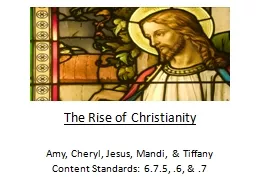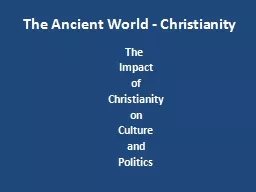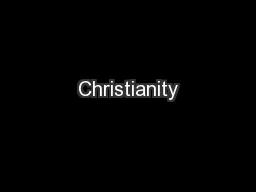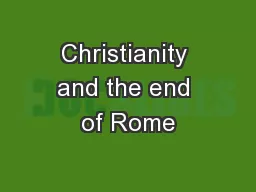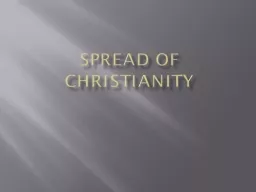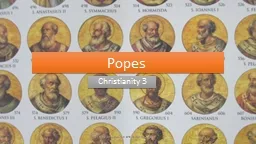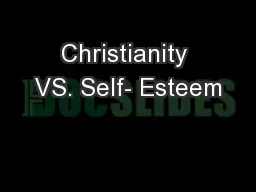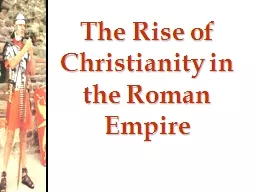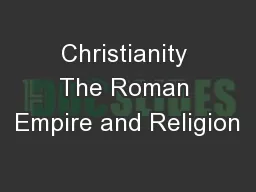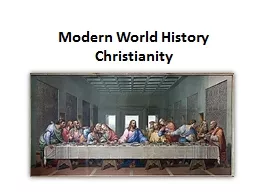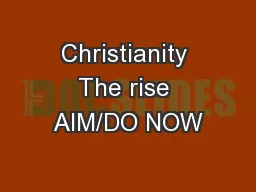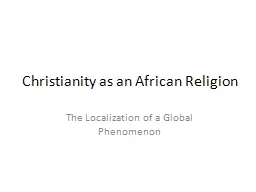PPT-The Rise of Christianity
Author : debby-jeon | Published Date : 2016-11-03
Amy Cheryl Jesus Mandi amp Tiffany Content Standards 675 6 amp 7 The First Christians Kingdom of Israel Division Roman Rule Jews under Roman control 63 BC Romans
Presentation Embed Code
Download Presentation
Download Presentation The PPT/PDF document "The Rise of Christianity" is the property of its rightful owner. Permission is granted to download and print the materials on this website for personal, non-commercial use only, and to display it on your personal computer provided you do not modify the materials and that you retain all copyright notices contained in the materials. By downloading content from our website, you accept the terms of this agreement.
The Rise of Christianity: Transcript
Download Rules Of Document
"The Rise of Christianity"The content belongs to its owner. You may download and print it for personal use, without modification, and keep all copyright notices. By downloading, you agree to these terms.
Related Documents

